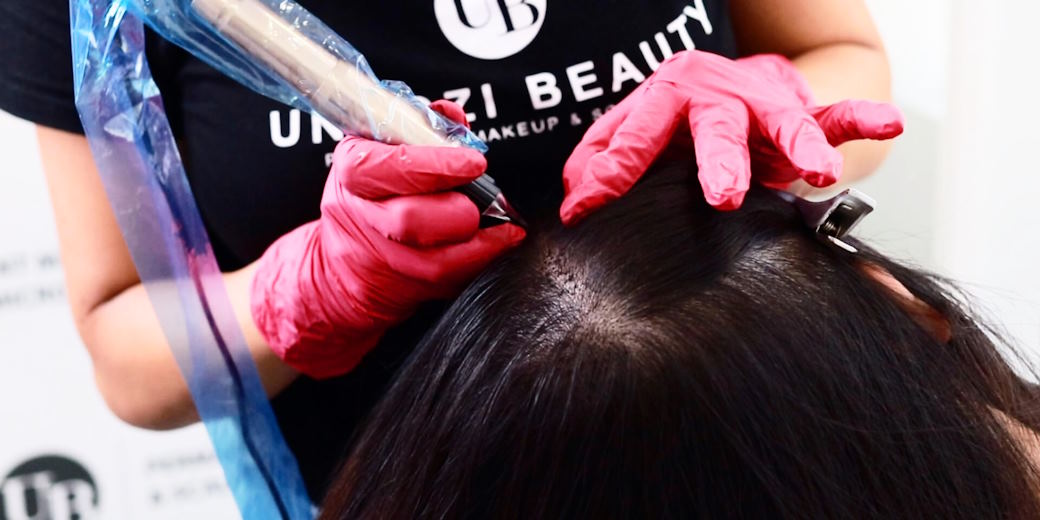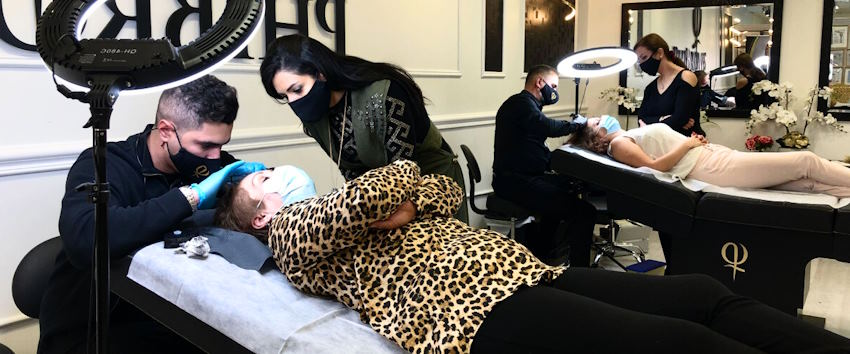
Scalp Micropigmentation: Yes Or No?
This procedure has become increasingly sought after by those dealing with hair loss or looking to improve their hairline aesthetics. This advanced method entails the precise application of specialized pigments onto the scalp, simulating denser hair or a realistic hairline. While SMP holds significant promise for numerous individuals, deciding to undergo this procedure warrants careful deliberation. Like any cosmetic intervention, it carries its unique factors to weigh, advantages to consider, and potential drawbacks to acknowledge.
What are the advantages of this procedure?
Non-Surgical Solution
Scalp micropigmentation is a non-invasive and non-surgical procedure, making it a viable option for individuals who prefer to avoid surgical hair restoration methods.
Immediate Results
Unlike hair transplant surgery, which may require several sessions for noticeable results, scalp micropigmentation delivers immediate and visible improvements in hair density and scalp appearance.
Low Maintenance
Compared to other hair loss treatments, SMP requires minimal maintenance. Once the initial sessions are complete, touch-ups may be needed periodically, but daily maintenance routines are generally straightforward.

Natural Appearance
When performed by a skilled technician, scalp micropigmentation can create a natural-looking hairline and the illusion of thicker, fuller hair, enhancing the individual’s overall appearance and confidence.
Versatility
SMP can be customized to suit hair loss patterns, including receding hairlines, thinning crowns, and complete baldness. It offers versatility in achieving desired hairline shapes and densities.
Long-lasting Results
With proper care and maintenance, scalp micropigmentation can provide long-lasting results, helping individuals maintain their desired appearance for years.
Are there any disadvantages?
While scalp micropigmentation (SMP) offers several benefits, there are also potential disadvantages.
Firstly, SMP is a cosmetic procedure that involves applying pigment to the scalp, which means it may not be suitable for everyone, particularly those with certain skin conditions or allergies.
Additionally, SMP is a semi-permanent solution. While the results can last for several years with proper care, they are not permanent and may require touch-ups over time to maintain the desired appearance.
Moreover, SMP does not tackle the root cause of hair loss and may not be appropriate for people with progressive hair loss conditions.

 Find your beauty inspiration with Lumination Salon. Our blog covers a wide range of topics from skincare to makeup, offering expert guidance to help you achieve your dream look.
Find your beauty inspiration with Lumination Salon. Our blog covers a wide range of topics from skincare to makeup, offering expert guidance to help you achieve your dream look.